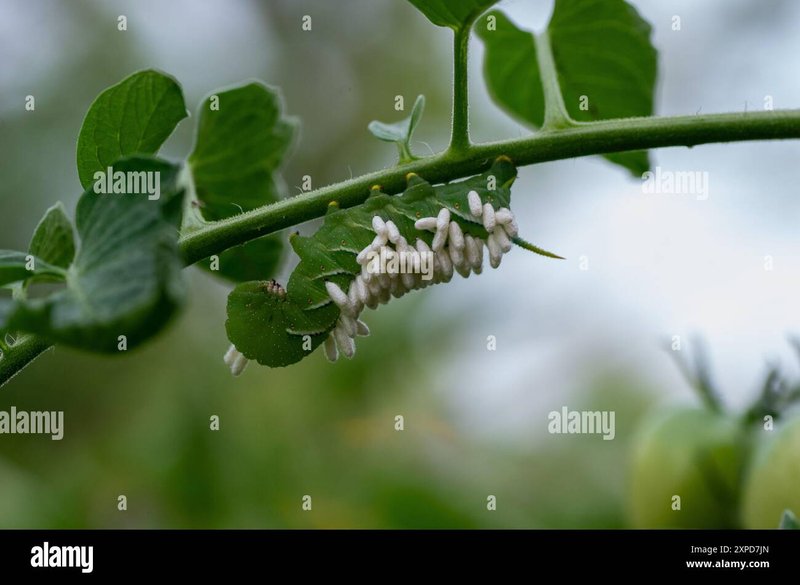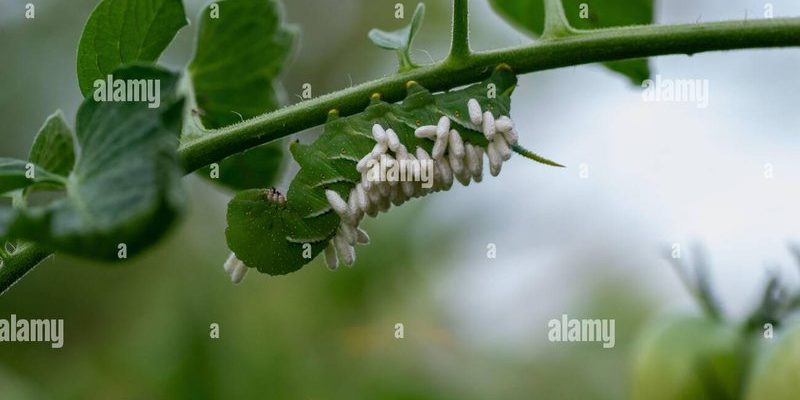
Parasitism can seem a bit like a horror movie plot, right? One creature living at the expense of another’s health, and sometimes life. But in nature, this isn’t just a gruesome tale—it’s a part of the ecosystem’s balance. Learning how to identify parasitism in hornworm larvae can equip you with a deeper understanding of the environment and the intricate relationships that exist within it. So, let’s dive in and explore this topic, breaking down everything from what hornworms are to how to spot the signs of these sneaky parasites.
What Are Hornworms?
Let’s start with the basics. Hornworms are the larvae of the Five-Spotted Hawk Moth or the Tomato Hornworm Moth. These caterpillars are notorious for their green bodies and the distinct horn protruding from their rear end, which gives them their name. They often feast on tomato plants, pepper plants, and even some of your favorite flowering plants.
When left unchecked, hornworms can cause significant damage to your garden. They can munch through leaves and even the entire plant if they’re particularly hungry. But they’re not all bad. In essence, they’re nature’s recyclers, breaking down plant material. But trouble arises when they become hosts for parasitic wasps, leading us to the next big piece of the puzzle.
Understanding Parasitism
So, what exactly is parasitism? In simple terms, it’s when one organism (the parasite) lives on or inside another organism (the host) and benefits at the host’s expense. In the case of hornworms, parasitic wasps inject their eggs into the caterpillar. Once the eggs hatch, the larvae start feeding on the hornworm from the inside out—yikes!
This is a common occurrence in nature, but it can be quite shocking to witness in your garden. You might be wondering, “Why should I care about this?” Well, understanding parasitism helps you recognize the signs and decide how to manage your garden’s health. Recognizing these signs can also keep your plants safe from significant damage and promote a healthier ecosystem.
Signs of Parasitism in Hornworms
Okay, so let’s get to the juicy part—how do you know if a hornworm is hosting these unwelcome guests? Here are some clear signs to look out for:
- Eggs or Larvae on the Hornworm: One of the first signs is the presence of tiny white or cream-colored eggs on the hornworm’s back. These eggs will eventually hatch into larvae.
- Unusual Behavior: If you notice a hornworm that seems sluggish or uncoordinated, it might be a sign that a parasite is at work.
- Missing Segments: As larvae develop inside the hornworm, they consume it, which can create visible holes or indentations on the caterpillar’s body.
- Brown or Dying Hornworm: If the hornworm appears brown or starts to decay, it’s a sure sign that it’s been heavily infested.
Recognizing these signs can save you a lot of heartache in your garden. However, it’s essential to approach the situation with a bit of understanding. Nature can handle many issues on its own, allowing beneficial insects to keep hornworm populations in check.
Common Parasites of Hornworms
There are a few primary parasites that target hornworms, and knowing who they are can help you identify the problem better. The most notable ones include:
- Cotesia congregata: This is one of the most common parasitic wasps that target hornworms. They lay their eggs inside the caterpillar, and the larvae consume the hornworm from the inside.
- Braconid Wasps: Similar to Cotesia, these wasps also infect hornworms but have slightly different life cycles and behaviors.
Each of these parasites plays a unique role in balancing the ecosystem, preying on hornworms that may otherwise run rampant in your garden. While it might seem grim, this natural control method is beneficial in the long run.
Effects of Parasitism on Hornworm Populations
Now, let’s think about what all this means for hornworm populations. When parasitism occurs, it affects hornworm numbers considerably. This is generally good news for gardeners, as fewer hornworms equate to less damage to your plants. However, if too many hornworms are infected by parasites, it can disrupt the balance of other plant-eating insects, leading to unforeseen consequences.
You might also notice a shift in the types of insects you see around your garden. Beneficial insects, such as these parasitic wasps, often lead to a decrease in harmful pests. This scenario encourages a more balanced ecosystem, where both plant life and insect populations can thrive together.
What to Do If You Spot Parasitism
If you discover that your hornworms are indeed plagued by parasites, you may want to consider a few actions. Here’s what you should do:
- Leave It Be: If the level of infestation isn’t catastrophic, it’s often best to leave the parasitized hornworms alone. They serve as food for the wasp larvae and can help restore balance.
- Handpick Hornworms: If you find that the hornworms are still healthy, you can remove them from your plants. Just be careful not to disrupt any wasp eggs or larvae.
- Encourage Beneficial Insects: Think about planting flowers that attract beneficial insects like parasitic wasps. This can help create a natural ecosystem in your garden.
Let’s face it—nature has its way of regulating itself. Your role as a gardener is to facilitate this process and ensure everything stays balanced.
Understanding the signs of parasitism in hornworm larvae can feel a bit like stepping into a wild narrative of nature’s twists and turns. On one hand, it can seem gruesome, but on the other, it’s part of the fascinating balance that exists in our gardens. By recognizing these signs, you not only learn more about hornworms and their ecology but also how to manage your garden more effectively.
Next time you spot a hornworm, take a moment to observe it. You might just be witnessing a tiny drama unfold in the insect world. So go ahead, embrace this knowledge, and cultivate a thriving garden that celebrates the rhythms of nature!

